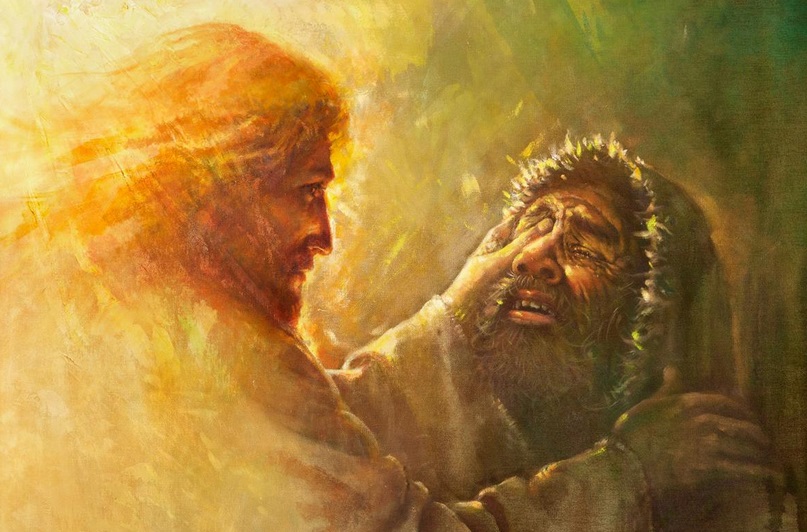The one who could see
The disciples look at the blind man, a beggar, because there is no commission for the visually handicapped, there is no Braille, there is no job-training. They look at the blind man and see a theological conundrum.
Mar 17, 2023

Reflecting on our Sunday Readings with Fr Rawi Alexander OFM Cap
4th Sunday of Lent (A)
Readings: 1 Samuel 16:1, 6-7, 10-13;
Ephesians 5:8-14;
Gospel: John 9:1-41
What do we see?
People see, and yet they don’t see. The first people to do this are the disciples (John 9:2). I imagine the disciples out for a walk with Jesus. A wonderful day to be alive. A great day to have an intellectually stimulating discussion with their rabbi. And then they happen to come upon a man who has been blind from the day he was born. The disciples seize the moment, pose a question: “Rabbi, who sinned, this man or his parents, that he was born blind?” And this is the first instance of it: people seeing, and yet not seeing. The disciples look at the blind man, a beggar, because there is no commission for the visually handicapped, there is no Braille, there is no job-training. They look at the blind man and see a theological conundrum. They look at the man and they see a question of sin and punishment.
Now, Jesus looks at the man and He sees something else altogether. Jesus looks at the man, and He sees an opportunity to show the world just what God is up to. Jesus looks at the man, and He knows the goodness of God can be revealed through Him.
And then Jesus, casually, as if He does this sort of thing every day, spits on the ground, makes mud with His spit, and He rubs the mud on the man’s eyes. He sends the man to a pool called “Sent,” with instructions to wash. The man returns, and he is no longer blind.
Suddenly the man is able to see the world as it is: fluffy clouds. Green buds appearing on trees. Trees moving, just a bit, from the stiff breeze, but the sun still warm on his face. He is a man who can see.
But the problem continues, of seeing and not seeing.
What do we see?
First, the neighbours. They are all abuzz. They see the man, but they are convinced it cannot be him — because the man they know is blind, the man they know is a beggar, the man they know cannot see. This man can see. “Who are you again?” they ask. “It’s me!” he replies. “Well, you look like him, but — no, no, really, who are you again?” They look at him and they see someone else. When they finally see that it is, really, truly, honest-to-Godly him, then they want to know the dirt. “Come on, how did it happen?”
“Jesus made mud with His spit and put it on me and sent me to Sent to wash.” (I think that’s something like saying, “He sent, sent, Sent me!”)
What do we see?
The next ones are the Pharisees, the religious leaders. They’re the upright ones. They see everything in terms of who is in and who is out, who is keeping the Law, and who is breaking it. They see the man who can see, and they see: evidence. Evidence against Jesus, who is already on their radar for the signs He has been performing, signs of God’s goodness. But they don’t see them that way. They see someone who is a nonconformist, who performs miracles, and therefore is doing work, on the Sabbath. They see someone who doesn’t obey the Law the way they want Him to. They barely acknowledge the formerly blind man…
they immediately move on to what he means, what he signifies to them. He ceases to be a person. He becomes a tool, a device they will use. He becomes an issue.
The disciples look at the blind man and they see a question of sin.
Jesus looks at the blind man and He sees an opportunity for God’s goodness to be revealed.
The Pharisees look at the blind man and they see an opportunity to make trouble for Jesus.
Even the blind man’s parents don’t seem to be able to see their own son. They look at him, and they see the loss of their place in the community, the threat of being kicked out of their synagogue.
What do we see?
The man who was born blind is given sight. He is also given faith, but it takes him a while to find it. By the end of our passage, after having navigated all these people who see him as a metaphor, as a symbol, he knows one thing. He can literally see now, and he’s glad. And so, he proclaims strongly, “Lord, I believe.” And he recognises Jesus for who He is – the Light of the World.
What do we see?
Do we see people who look like sinners to us? Or do we see people whose struggles are unimaginably hard?
Do we see opportunities to trick and trap one another, prove ourselves right? Or do we see opportunities for God’s goodness to be revealed?
Do we see the transformation that is possible when we let the Light of the World shine in our lives? Do we see the healing that is possible when we become bearers of that light to a world filled with darkness?
This is our call as members of the Church.
(Fr Rawi Alexander OFM Cap is currently serving in the Diocese of Sibu)







Total Comments:0